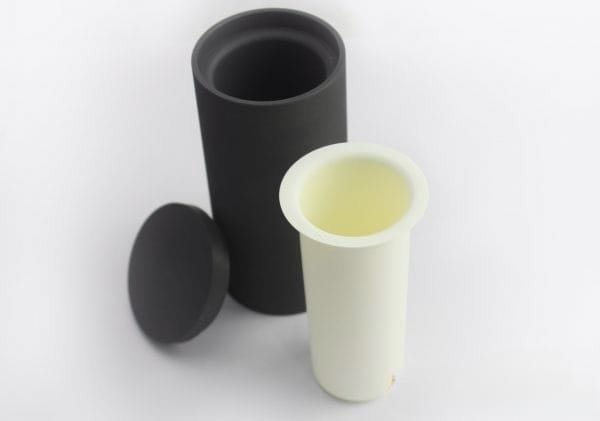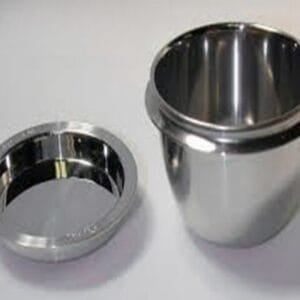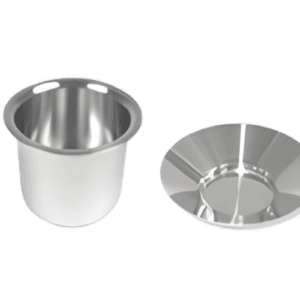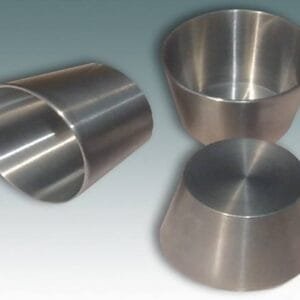Pyrolytic Boron Nitride Crucible Description
Compared with normal boron nitride crucible, pyrolytic boron nitride crucible has much better purity level. PBN crucibles and other pytolytic boron nitride products are synthesized on the mold by chemical vapor deposition (CVD) process, with BCl3 and NH3 at high temperature and low pressure. The PBN products are extremely pure, as the purity of vapor is easier to be controlled. Most of PBN products made from CVD process have total impurity of less than 100 ppm, which means the purity is better than 99.99%. With such a high purity level, PBN crucibles are ideal products for semiconductor industries.
Similar with graphite, boron nitride has great strength at high temperature. High purity PBN products have even better mechanical properties. As the solid material is formed by CVD process, the density of the products could almost reach the theoretical value. PBN products provided by TFM also have great thermal shock resistance. Plates of PBN could be heated to more than 2000 degree and dropped in to water without get broken.
Pyrolytic Boron Nitride Crucible Specifications

Item | value | Unit | |
lattice constant | a:2.504×10-10 c:6.692×10-10 | μ m | |
density | 2.0-2.19 | g/cm3 | |
resistivity | 3.11×1011 | Ω·cm | |
tensile strength(ab) | 153.86 | N/mm2 | |
bend strength | c | 243.63 | N/mm2 |
ab | 197.76 | N/mm2 | |
elastic modulus | 235690 | N/mm2 | |
thermo conductivity | “a” direction “c” direction | ||
(200℃) | 60 2.60 | W/m·k | |
(900℃) | 43.70 2.80 | W/m·k | |
dielectric strength(at room temperature) | 56 | KV/mm | |
Pyrolytic Boron Nitride Crucible Available Sizes
| Product | Available size |
| Liquid Encapsulated Czochralski, PBN LEC crucibles | 50ml~5L |
| Molecular Beam Epitaxy, PBN MBE crucibles | 5ml~300ml |
| Vertical Gradient Freeze, PBN VGF crucibles | 0.2L~5L |
 PBN crucible with Graphite body
PBN crucible with Graphite bodyPyrolytic Boron Nitride Crucible Packaging
Our high performance pyrolytic boron nitride crucibles are wrapped in foam and packaged in plywood cases to ensure safe storage and transportation.





Reviews
There are no reviews yet.